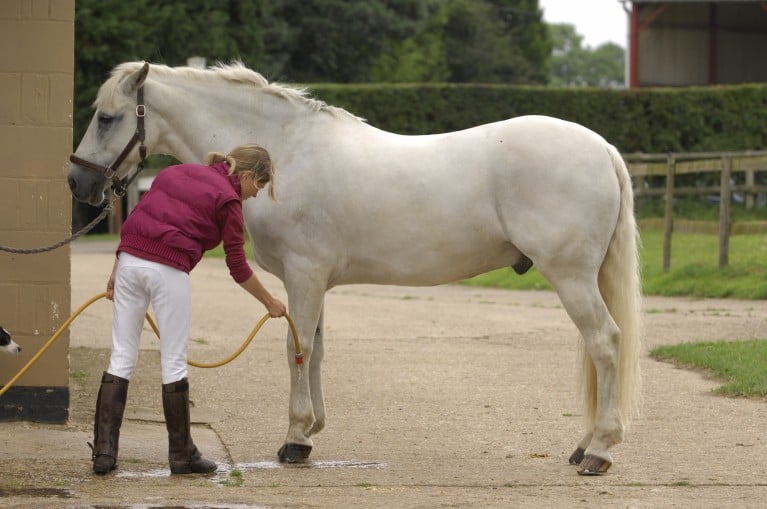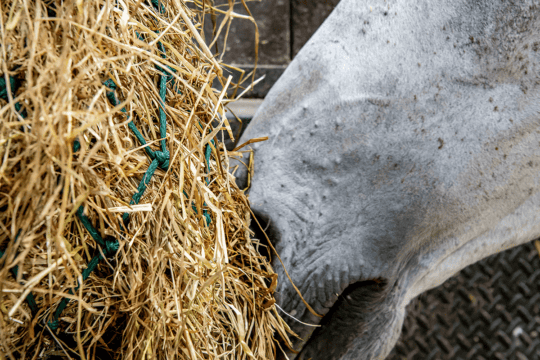Who’d have thought that something as simple as heat and cold could help healing? Equine nurse Phillippa Pritchard from The Liphook Equine Hospital explains how to use them to their full benefit.

Cold therapies – Applying something cold to an injury or ailment causes bloodflow to the area to be reduced, which can, in turn, reduce bruising and haemorrhaging. It also counteracts inflammation, and can provide some pain relief and reduce muscle spasms.
Hot therapies – Treatment with superficial heat increases the blood flow to the area, which promotes healing by increasing the amount of oxygen and nutrients in the area. Heat also relaxes muscle and can enhance the elasticity of connective tissue prior to exercise.
Keep it cool
Some examples of cold therapies include...
- Cold hosing – should never be underestimated and is very difficult to get wrong. Cold hosing should take place as often as possible for 20 minutes at a time after a blow or trauma, but care should be taken if the horse isn’t used to the hosepipe. Start with a slow hose on the front feet before moving onto the legs, and then the back feet and legs if necessary. Most horses will tolerate the hose well if given time to adjust to it.
- Ice cubes – an ice block (used for picnics) or frozen veg, which can be wrapped in a towel to protect the skin, then bandaged to the leg.
- Ice boots – these are great for treating feet, as the horse can stand in the boot filled with iced water, but a tub of iced water can work just as well.
- Leg wraps – which are specially designed to be put in the freezer before being applied to the leg.
- Specially-designed cold packs – which can be left in your first-aid kit ready for when you need them. Application and preparation will depend on the individual product.
Hot stuff
Some examples of hot therapies include…
- Poultices – such as Animalintex, which can be used hot to draw out infection.
- ‘Hot hands’ – which are simple and easy to make. Simply fill a rubber or latex glove with hot water from the tap (not the kettle), tie a knot in the end and bandage it to the area.
- Hot compress – place a flannel or piece of gamgee in a bowl of hot, but not boiling water, wring it out and hold or bandage it onto the area.
- Heat packs – just like cold packs that can be stored in your first-aid kit, ready-to-use heat packs are available, too.
- Hot water bottles – can be useful for filling with hot water and bandaging to the area, as they will mould to the shape of the leg. But only part-fill the bottle, as it will become heavy and slip down easily if it is too full.
Hot and cold therapies are an advantage to any horse owner, so here’s how they can help some common ailments…
- Foot abscesses – Treatments mainly include poultices such as Animalintex, which can be used wet or dry, hot or cold, to draw out infection from an abscess. Standing the foot in warm water and Epsom salts before poulticing will help to soften the hoof to allow the infection to be released.
- Kicks and bites – can cause swelling and bruising, so cold hosing or applying a cold compress can help soothe the affected area after a disagreement in the field.
- Soft tissue abscesses – for example those caused by bites or puncture wounds. Applying a hot compress can assist in maturing the abscess to allow the pus to be released and healing to begin. Alternating hot and cold compresses may assist in the reabsorption of an abscess in some cases.
- Tendon injuries – can benefit from cold hosing in the initial stages (24-48 hours after the initial injury) to reduce inflammation. After 48 hours, hot therapies can be used to increase bloodflow to the area and aid the healing process. However, if a tendon injury is suspected, your vet should examine it prior to hot or cold therapy treatments, and it is important to speak to your vet before you apply heat therapy to any tendon injury, as in some situations it can cause more harm than good.
- Laminitis – Standing a horse in iced water up to just below his knee may help prevent laminitis in certain situations – for example, if the horse has managed to get access to grain, putting him at risk – but always speak to your vet first.
Top tip
To maintain the effectiveness of your chosen therapy, ensure that its temperature is maintained as much as possible. For some therapies, you might need to regularly refresh the item to keep it at the required temperature.















